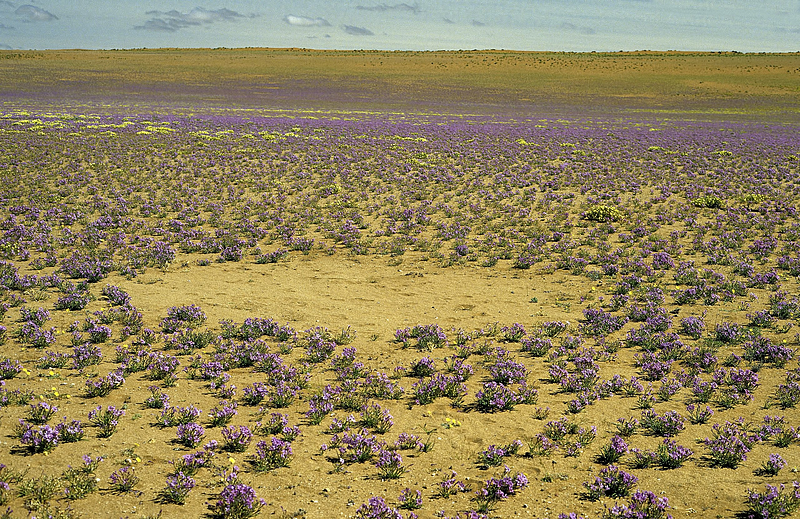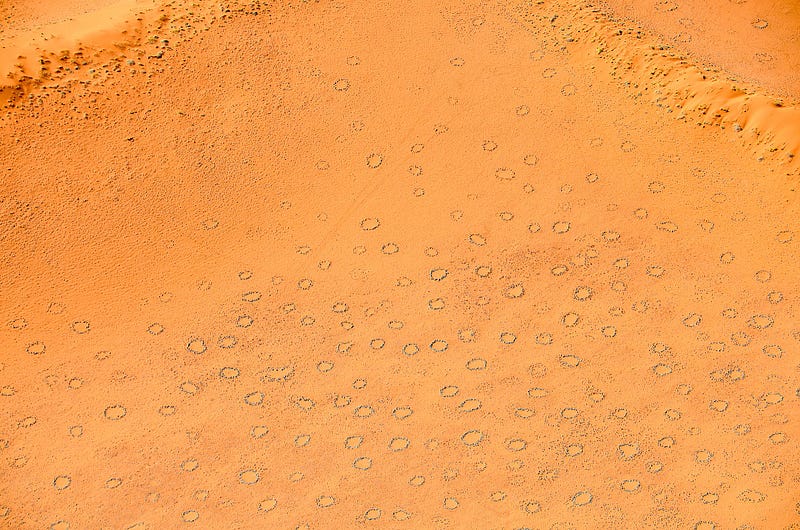The Enigmatic Fairy Circles of the Namib Desert Unveiled
Written on
Chapter 1: Understanding the Fairy Circles
The Namib Desert, stretching across Angola, Namibia, and South Africa, is renowned for its striking landscapes and rich deposits of minerals like tungsten, salt, and diamonds. Amidst its harsh climate, the presence of grass is noteworthy, yet the focus of scientific inquiry lies in the intriguing barren patches that disrupt the greenery. What causes these circles to be devoid of vegetation?
These barren formations, which range from approximately 3 to 19 meters in diameter, have sparked considerable interest among researchers. A study published in the journal Perspectives in Plant Ecology, Evolution and Systematics highlighted the "remarkable spatial organization" of these patches, which are distributed throughout the Namib Desert.

Section 1.1: Theories Behind the Formation
Like many natural phenomena, the fairy circles are shrouded in myth. However, scientists advocate for logical explanations. One prevailing theory suggests that termites feed on the roots of the grasses, while another posits that the grasses self-organize to optimize water usage, given the region's sporadic rainfall.
Recent discoveries of similar patches in Australia complicated matters, as they eliminated the termite hypothesis. New research led by Stephan Getzin from the University of Göttingen proposes that plant self-organization is the key factor behind these formations. Simply put, grasses adapt to make the best of scarce water resources in the desert.
#### Subsection 1.1.1: Research Methodology
In 2020, Getzin and his team studied circles across ten different regions of the Namib. Their research involved tracking rainfall patterns, analyzing the grasses, their root systems, and potential termite activity.

Section 1.2: Observations and Findings
The researchers noted that within ten days following rainfall, new plants sprouted in the barren areas. However, these grasses perished shortly after, while the surrounding vegetation thrived. Getzin's team found no signs of termite activity in the circles, indicating that the absence of grass cannot be attributed to insect feeding, as there was insufficient biomass present.
Furthermore, they observed that the roots of the dead grasses were comparable in length to those outside the circles, suggesting a significant investment in root growth to seek out moisture.

Chapter 2: The Ecohydrological Dynamics
Sensors installed in the soil revealed a gradual decrease in moisture levels both inside and outside the barren circles after the initial rain. As the surrounding grasses flourished, soil moisture diminished rapidly across the entire area, including within the circles.
Scientists describe this as an extraordinary instance of "ecohydrological feedback." Water in the Namib Desert moves laterally through diffusion, sometimes over distances exceeding seven meters. The grasses outside the circles extract water from the area with their extensive root systems.
This first video discusses the fascinating phenomenon of fairy circles in Namibia and features insights from Prof. Norbert Juergens, exploring the scientific community's understanding of these unique formations.
The second video delves into the mystery of Africa's fairy circles, presenting various hypotheses and the latest research findings that illuminate this captivating natural occurrence.
Getzin emphasizes that the implications of this study extend beyond Africa. The self-organizing patterns observed could be crucial for plant survival amid escalating drought conditions driven by climate change, a challenge increasingly faced in various arid regions worldwide.
“We observe similar self-organizing structures in numerous harsh environments globally. In these situations, plants must adapt by developing these geometric formations to endure,” concludes the scientist.
Ancient Mayan Cities: Unraveling the Toxic Legacy
Recent research indicates that the land once occupied by the Mayans is heavily contaminated with mercury, raising questions about the environmental impact on their civilization and health.
Did you find this article engaging? If you did, please leave a comment, provide some feedback, or consider supporting my work. It motivates me to continue creating and sharing intriguing content. Feel free to follow for daily updates! Thank you!